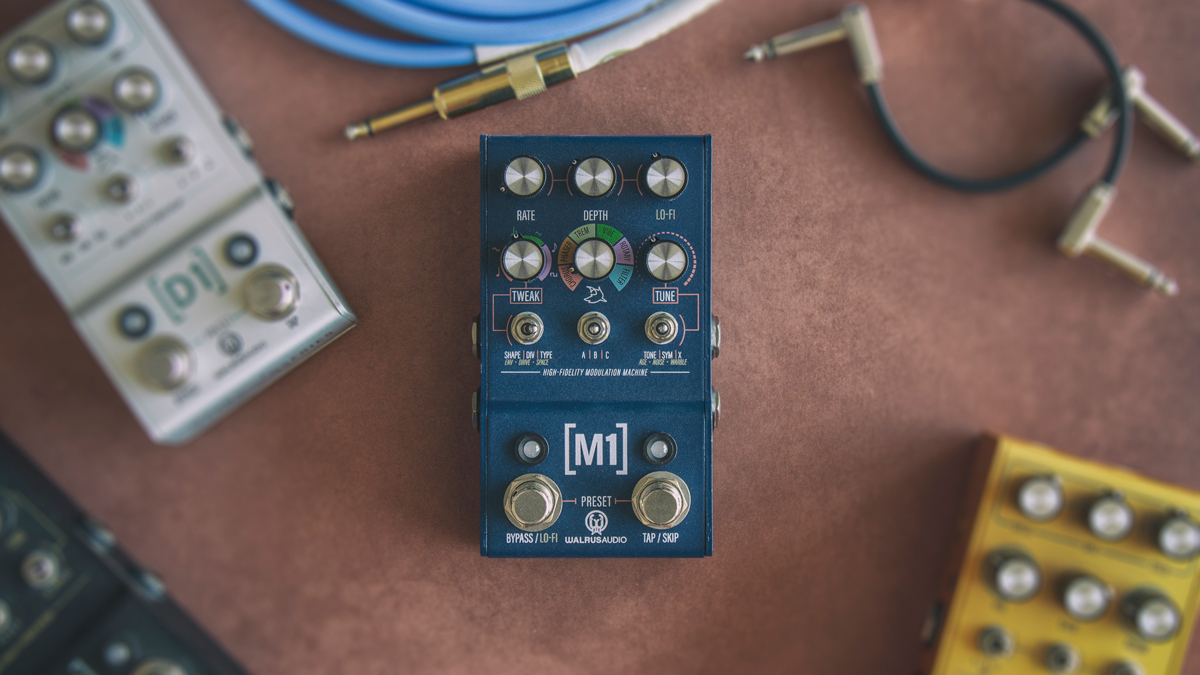Walrus Audio debuts hugely tweakable, six effect-strong M1 High-Fidelity Modulation Machine
The latest pedal to join the Mako Series packs chorus, phaser, tremolo, vibrato, rotary and filter sounds – and comes accompanied by a demo from Yvette Young

Walrus Audio isn’t messing around in 2022. One week on from the Slötvå Multi-Texture reverb and two days since the D1 V2 was unveiled, the company has dropped a heavyweight new addition to its feature-rich Mako Series: the M1 High-Fidelity Modulation Machine.
The M1’s killer app is its ability to deliver six modulation effects – chorus, phaser, tremolo, vibrato, rotary and filter – from one compact modulation pedal.
Walrus is promising studio-quality algorithms inspired by classic analog sounds, which offer a wealth of customization, as well as three types per effect.
In addition to the usual Rate, Depth and Type knobs, the pedal offers a dedicated Lo-Fi knob for dialing in unique movement and texture for each effect type, plus controls for Tweak and Tune, which promise a huge amount of flexibility via two three-way toggles.
Using these switches, Tweak adjusts the shape, tap tempo division and type of effect, while Tune handles tone, symmetry of the LFO waveform and Walrus’s trademark effect-specific X control.
Here, X can tweak everything from pitch detuning and the level of stereo modulation to flutter and resonance, depending on which effect is selected.
The M1 even features a dedicated footswitch for tap tempo and ‘skipping’, which repeats the last few milliseconds of audio received by the pedal.
Get The Pick Newsletter
All the latest guitar news, interviews, lessons, reviews, deals and more, direct to your inbox!
You can hear a variety of tones in action below courtesy of Yvette Young’s Pedal Play demo, which finds the Covet fingerstylist go full midwest emo with some melancholy extended chords and shimmering mod sounds.
Of course, this being a Mako Series pedal, you get all the tricked-out benefits found in the rest of the line: full stereo operation, MIDI control and nine onboard presets, as well as the USB updatability introduced in the D1 V2. And like the rest of the range, it runs from a 9V pedalboard power supply that can provide 300mA of juice.
Given Walrus’s stellar reputation in this arena, the M1 could prove a compelling alternative to larger multi-function modulation pedals like the Strymon Mobius or Boss MD-200.
The M1 is available to preorder now, with shipping commencing on February 15. Pay a visit to Walrus Audio for more info.

Mike is Editor-in-Chief of GuitarWorld.com, in addition to being an offset fiend and recovering pedal addict. He has a master's degree in journalism from Cardiff University, and over a decade's experience writing and editing for guitar publications including MusicRadar, Total Guitar and Guitarist, as well as 20 years of recording and live experience in original and function bands. During his career, he has interviewed the likes of John Frusciante, Chris Cornell, Tom Morello, Matt Bellamy, Kirk Hammett, Jerry Cantrell, Joe Satriani, Tom DeLonge, Ed O'Brien, Polyphia, Tosin Abasi, Yvette Young and many more. In his free time, you'll find him making progressive instrumental rock under the nom de plume Maebe.











